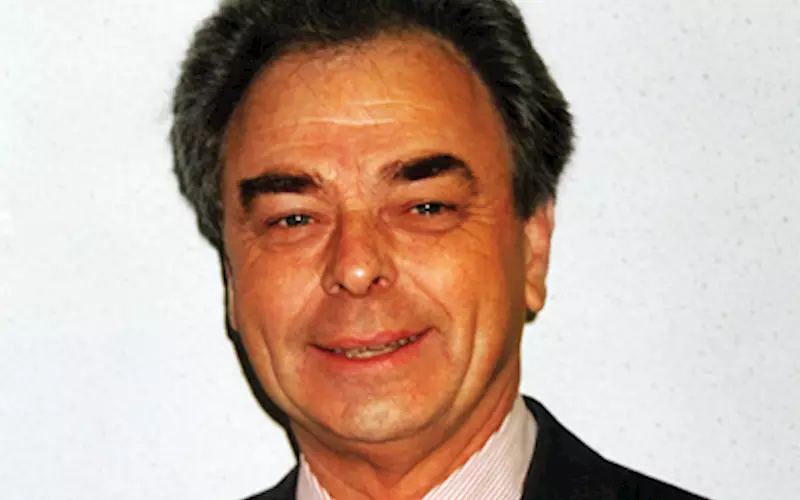Why PUR almost failed and how books are being perfectly produced by binders states Tony Clark
PUR has arrived in India. Tony Clark, the bookbinding guru describes the journey of adhesives
19 Sep 2011 | By Samir Lukka
In the case of PUR for bookbinding, for instance (this could have happened in 1990 or around that time). Development chemists said they had found the panacea for the binding trade, a glue that would bond any paper without any spine preparation, (every bookbinders dream).
Samples produced in the laboratory gave fantastic page strength results but the problem was that the adhesive only had a pot life of one hour, (not very practical for binding machines). Discussions on how a binding machine works and the set-up times etc, followed and the chemist’s went away to re-think the project.
Trials on a open glue tank using a standard drum unloader showed great promise. The only problem was that the books had to be stacked for twenty four hours before they could be trimmed and the cross linking was completed (back to the drawing board in the development laboratory).
In the meantime we took a Muller Martini two wheel tank and modified it with a different scraper system and coated all the parts with oven-cured PTFE.
Soon development took off and large production runs started but the need for the application of silicone sprays on the three-knife trimmers meant we could run for four hours – at least – before having to clean out the glue tank and clean the trimmer.
Development was quick and furious so by early 1991 we were talking about the development of the second generation PUR’s with longer pot life, shorter trim times, higher green tack and much better flexibility.
Hotmelt v/s PUR
An article I wrote in May 1991 showed graphs on the improvements in thermal stability and the difference in page strengths with the then standard hotmelts and new PURs.
(Of course standard hotmelts have improved greatly but so have new generations of PURs).
In June 1993, a development on a single wheel PUR tank was demonstrated in the UK; this unit had a small reservoir of glue, a single wheel and reverse spinner and feed from a drum unloader. This tank could potentially replace the standard glue pots of different makes of binding machines.
The control meant the 0.4mm coating of PUR was possible giving an important economic advantage over the need for the sewing of sections, especially in diary production.
The large binding machine manufacturers produced their own tanks and PUR was on the road, but one problem remained – the binding machine operators. They could not see how adhesive could work with such a thin coating weight, so everytime our backs were turned, up would go the glue thickness to the norm of 5-7mm.
The costs went out of the window and the books would not open flat. Even coloured PURs were tried, but we could not stop this waste of the adhesive.
Schooling, seminars and standing by the machine for hours did not convince the average binding machine minder.
Then a breakthrough! The developers of the drum unloaders found an application opening for slot coating of PUR to the spines of the books to replace the wheel-in-pot systems. Like everyone who thinks bookbinding is easy, they found that to apply a very thin film of glue to the spine of books jetting upwards and having to start 3m from the head and finish 3m from the foot was not so easy.
Even at relatively slow speeds of 3,000 clamps per hour, let alone the potential of 12,000 clamps speeds.
So as the years passed the extrusion units improved and today we can apply PUR on single clamp machines, also on the very largest of multi-clamp units without the problems of cleaning out large open glue tanks.
There have been many developments in the twenty or so years in adhesive technology; especially the slot coating application unit. This means, binders and potential users of PUR have all the tools to produce all types of books from on-demand to the unsewn editions of travel, map and education books that could only be sewn some years ago.
When I said in 1991 that the page strength of a PUR book was better than a sewn one, bookbinders did not believe me until we put the page -strength results to the doubters.
Trends in glue application
So what have we gained from the glue and application developments over these years?
1 Cleaner machines
2 Reduced waste
3 A safer environment for the operators
4 No chaff in the glue pots
5 Better control of the application and consistent coating weights
6 Thinner film for open flat or round applications
7 Higher production levels with less downtime
8 Fewer clean-ups
9 Shorter start-up times
10 New application units means one day one can use hotmelts and within hours change to PUR
I am glad I was at the beginning of the PUR development with all the struggles and frustrations but delighted to see all the advances in both the adhesive and the applicators. Have I got any regrets?
Yes, just one, I wish I had mentioned slot-coating of PUR in the guide on bookbinding produced by Welbound Worldwide.
For copies of Tony Clark’s handbook, please contact: welbound@gmail.com
Click here to read more about Ipex South Asia 2011











 See All
See All